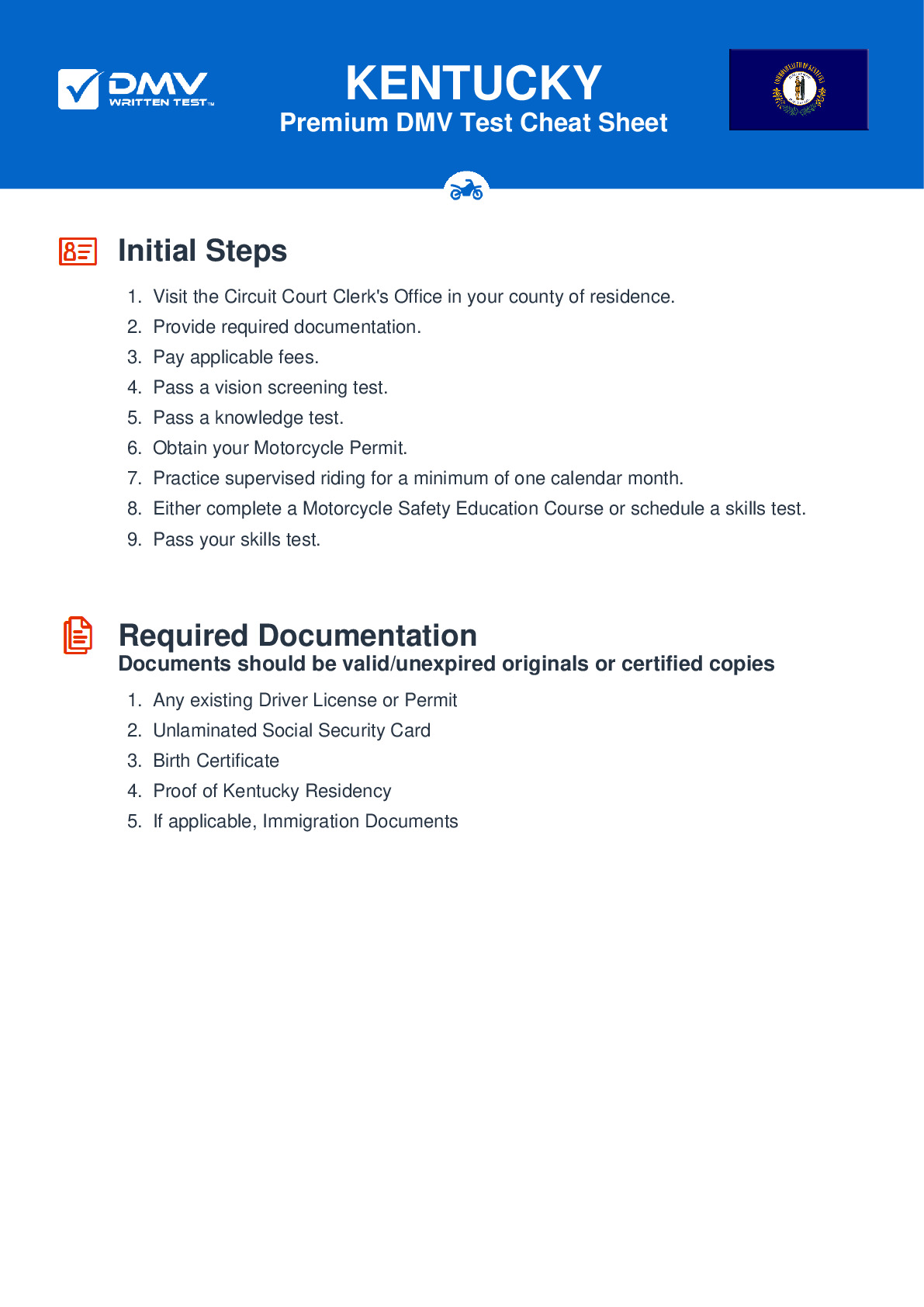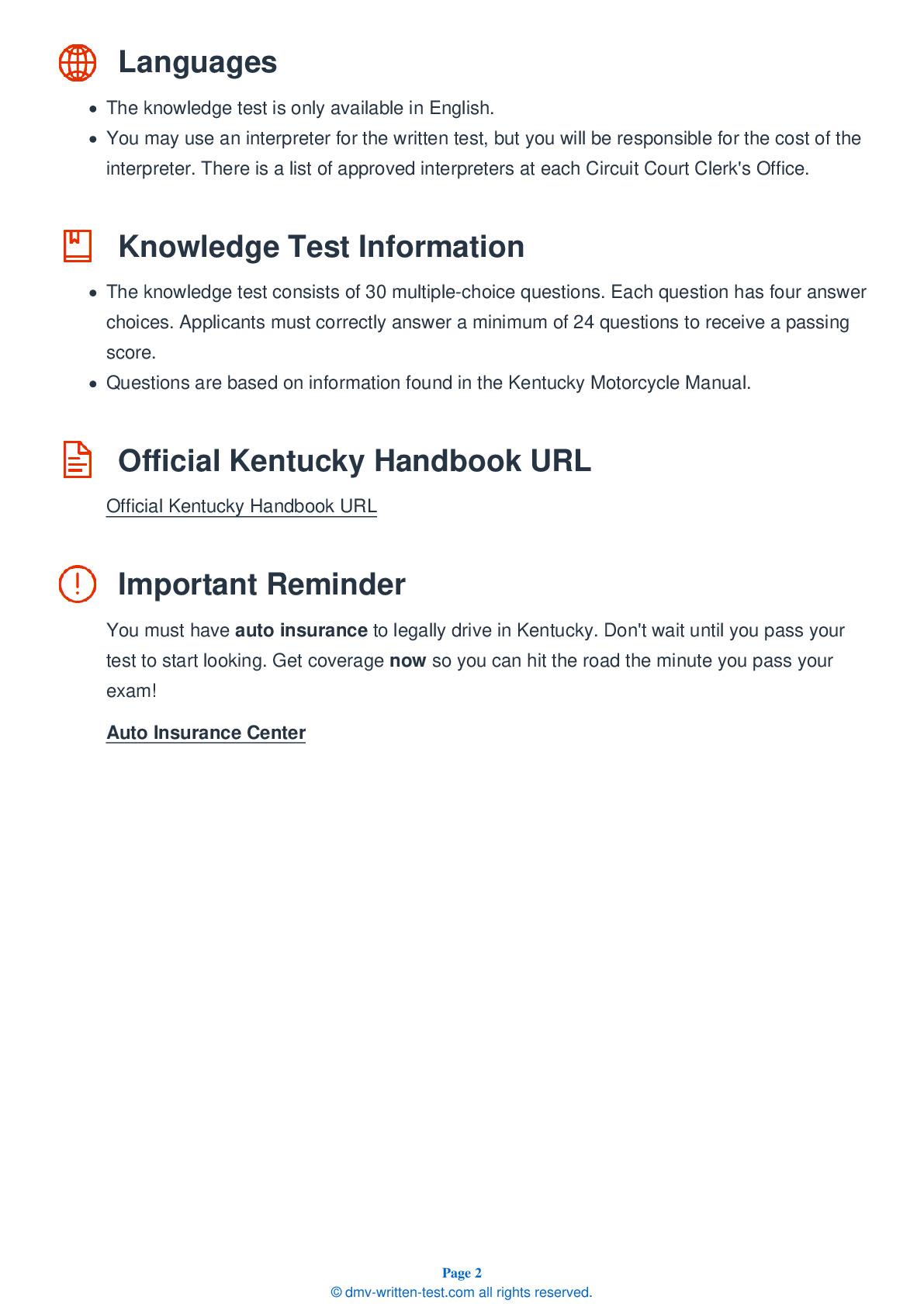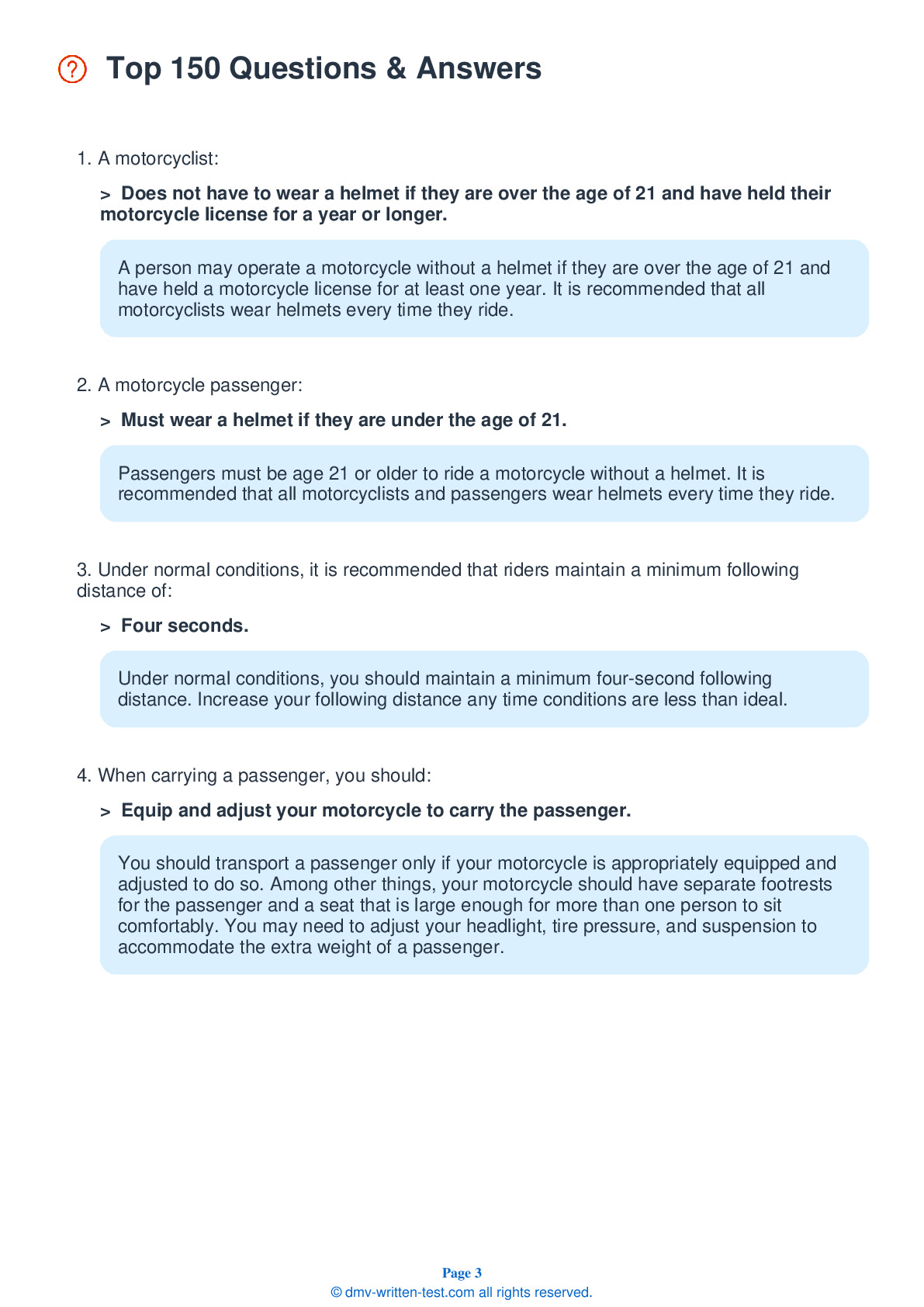2025 Kentucky Motorcycle Permit Test 14
The following questions are from real DMV written motorcycle permit tests. These are some of the actual permit questions you will face in Kentucky when getting your motorcycle learners permit. Each motorcycle theory practice test question has three answer choices. Select one answer for each question and select "grade this section." You can find this button at the bottom of the drivers license quiz. For a complete list of questions and answers for Kentucky please visit https://cheat-sheets.dmv-written-test.com/en/kentucky/motorcycle.
Number of Tests
Number of Question
Passing Score
22. An integrated braking system:
Explanation
An integrated braking system is a variant of a linked braking system. Partial front braking is applied whenever the rear brake is activated. Check your owner's manual for a detailed explanation of the braking system on your motorcycle.
23. When a vehicle attempts to pass you from behind, you should:
Explanation
When being passed, it is generally best to ride in the center portion of your lane. Being too close to the passing vehicle increases the risk of a collision.
24. When riding in a group, inexperienced riders should position themselves:
Explanation
In a group of motorcyclists, riders with less experience should be positioned toward the front of the group, just behind the leader. This will allow more experienced riders to keep an eye on them without forcing the inexperienced rider to lead the group.
25. How can you regain control if your rear tire locks up?
Explanation
To regain control of a locked rear wheel, the brake must be released. However, if you accidentally lock the rear brake on a good traction surface, you can keep it locked until you have completely stopped.
26. At a minimum, how often should a motorcycle's hydraulic fluid be checked?
Explanation
Pre-ride motorcycle inspections are an important part of ensuring safe riding. Hydraulic fluids and coolants should be checked at least once a week.
27. When riding at night, you should do all of the following, except:
Explanation
When riding at night, use your high beam (unless you are following or meeting another car), take advantage of the headlights of other vehicles, and wear reflective materials to increase your visibility. You should always be flexible about your lane position, selecting whichever position will help you to see, be seen, and have an adequate space cushion.
28. Swerving a motorcycle:
Explanation
Swerving is a quick maneuver that requires a lot of traction in order to be safely executed. Making sudden moves, such as swerving, on slippery surfaces should be avoided.
29. If you must brake and swerve to avoid a hazard, you should:
Explanation
If a hazard requires you to brake and swerve to avoid a collision, you should take the actions separately. Do not brake while swerving because doing so may cause your motorcycle to fall over.
30. If the road is wet, you should avoid:
Explanation




